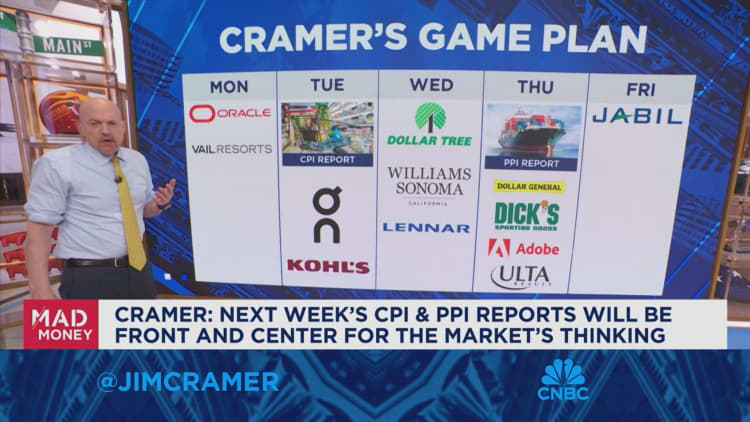Shoppers are seen at a Kroger supermarket on October 14, 2022, in Atlanta, Georgia.
Ilya Novelage | AFP | Getty Images
Rising gasoline prices will likely put a floor on inflation in February, which could reinforce the Federal Reserve's decision to take a slow approach to interest rate cuts.
Economists expect prices across a wide range of goods and services to rise 0.4% on the month, ahead of January's pace of 0.3%, according to the Dow Jones consensus. Excluding food and energy, the increase in core inflation is expected to rise by 0.3%, which is also a tenth of a percentage point higher than the previous month.
On an annual basis, headline inflation is expected to show a 3.1% increase and core inflation a 3.7% increase when the Department of Labor's Bureau of Labor Statistics releases its latest CPI reading on Tuesday at 8:30 a.m. EST. . The 12-month readings in January were 3.1% and 3.9%.
Although it has fallen sharply since its peak in mid-2022, the resilience of inflation will almost certainly ensure that the Fed does not cut interest rates at its April 30-May 1 meeting, and possibly in the summer, according to current market pricing. Markets were shaken in January when CPI data came in higher than expected, and Fed officials subsequently shifted their rhetoric to a more dovish tone on easing policy.
“Although we do not expect the inflation trend to accelerate again this year, less pronounced progress over the next few months will likely keep the Fed looking for more confidence that inflation is on track to return to target on a sustainable basis.” Sarah House, chief economist at Wells Fargo, said in a recent note to clients:
Energy prices had fallen earlier in the winter, putting some downward pressure on headline readings.
But Wells Fargo estimates that energy services rebounded 4% in February, leading to an increase at the pump, with a gallon of regular gas up about 20 cents, or more than 6%, from last month, according to AAA.
The bank also estimates that commodity prices have held steady despite easing supply chain pressures and pressures from rising interest rates. On the bright side, House said lower prices for travel, medical care and other services have helped keep inflation under control.
However, Wells Fargo raised its inflation forecast for the full year.
Economists at the bank now expect core CPI to reach 3.3% this year, up from a previous estimate of 2.8%. Focusing on the core personal consumption expenditures price index, the Fed's preferred measure, Wells Fargo expects inflation to reach 2.5% for this year, versus a previous estimate of 2.2%.

Wells Fargo is not alone in anticipating a higher pace of inflation.
A New York Fed survey in February found that while respondents stuck to their one-year inflation expectations at 3%, their expectations in the three- and five-year horizons accelerated to 2.7% and 2.9%, respectively, both good. Ahead of the central bank's target of 2%.
While increases in gas prices can play a large role in the survey's monthly fluctuations, expectations of increases in gas prices were actually relatively benign.
The Atlanta Fed's measure of “fixed rate” inflation held steady at 4.6% on a 12-month basis in January. The measure is weighted toward items such as housing and insurance, and Fed officials hope shelter costs will decline during the year, taking some pressure off cost-of-living measures.
On Thursday, the Bureau of Labor Statistics will release the Producer Price Index for February, which measures what producers get for their goods and services at the wholesale level. These two indicators will be the last inflation data that the interest rate-setting Federal Open Market Committee will see before its next meeting on March 19-20.
